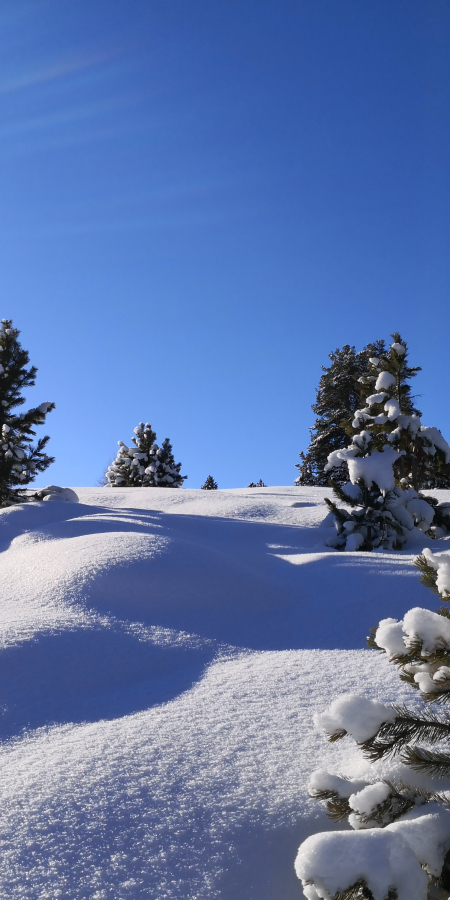Out and about in nature.
Predators, mother cows and guard dogs

While hiking, you are in the habitat of various farm and wild animals. In addition to herds of mother cows and guard dogs, bears and wolves currently live in the Lower Engadine.

Exploring the habitat of wild animals.
The most important rules of conduct
If the rules of conduct are observed, there is no danger to hikers, bikers or touring skiers due to wild animals. All outdoor activities can be carried out as before despite the wolf population in Graubünden.
- As a matter of principle, recreational activities should take place on signed paths and places. The habitats of all wild animals must be respected.
- Make sure that the animals are not attracted by openly accessible, potential food (e.g. by litter). Do not dispose of food leftovers in the forest (e.g. at barbecue sites), even in small quantities.
Encountering a bear
Since 2005, individual brown bears have been observed again in Graubünden, after it had been over a hundred years since this was the case.
If you see a bear:
- Do everything you can to stay calm. Try to grasp the situation calmly.
- If the bear notices you, identify yourself as a human being.
- Talk in a calm but clear voice and make slow arm movements. Do not run away and under no circumstances try to approach him.
- If, despite these measures, the bear does not flee and does not pay attention to you, move away without losing sight of the animal.
When a bear stands up:
- This is not a threatening gesture! Bears are curious and will stand up to investigate the situation.
- Stand still and draw attention to yourself by speaking calmly.
- Avoid eye contact.
If a bear attacks ( unlikely to happen):
- If an attack still occurs, drop down after physical contact has occurred.
- Lie flat on the ground or crouch down on the ground with your hands on the back of your neck. If available, your backpack will protect your back.
- Wait until the bear has moved far enough away before standing up.
No feeding:
- Once bears have recognised humans as food suppliers, all shyness is gone. They will then deliberately seek out the vicinity of humans and thus provoke dangerous situations.
Source: https://www.nationalpark.ch/en/
Encountering a wolf
- Stand still and try to grasp the situation. If the wolf notices you, it will usually retreat or flee.
- If the wolf does not flee immediately, draw attention to yourself with a certain voice.
- Retreat slowly, the wolf will observe you or flee directly.
- Under no circumstances try to approach the wolf, not even for photos. Never pursue a wolf.
- Wolves must not be fed under any circumstances!
- Report wolves with conspicuous behaviour or low shyness to the Gamekeeper.
- Wolves may view dogs as intruders or prey. Always keep your dog under personal control or leash it.
Further information compact
Leaflets Office of Hunting and Fishing Canton Graubünden

Mother cow herds & guard dogs
In the Lower Engadine, mother cows graze with their calves and guard dogs watch over their herds. Learn more about where to find the herds and guard dogs and how to behave.
